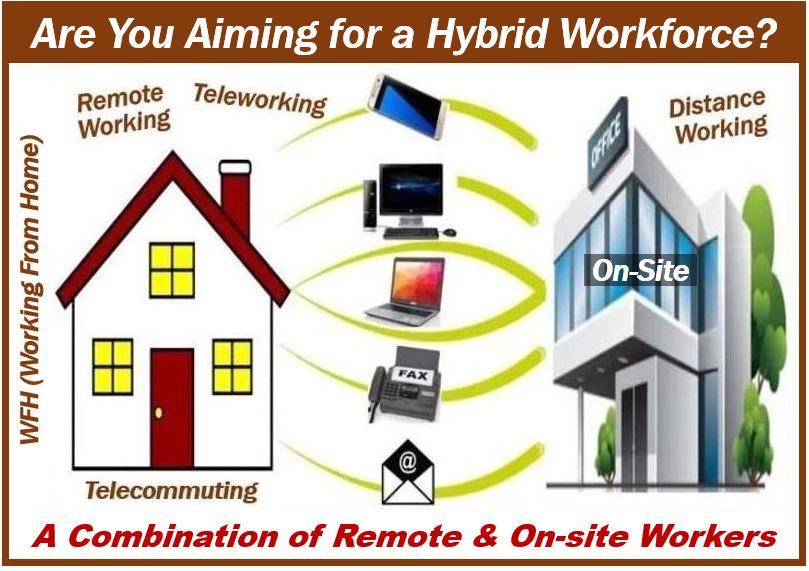Remote workforce proponents may have overstated the comfort levels of industry leaders about going fully virtual. Terms such as the “New Normal” were bandied about as the benefits of work-from-home strategies were touted in 2020. Few would dispute the fact that Cloud-based organizations can communicate and collaborate in real-time using platforms such as Microsoft Teams. And, yes, companies can gain access to talented people outside their commuter radius by leveraging these remote capabilities.

But it seems decision-makers are more inclined to employ hybrid strategies that take advantage of remote infrastructures and have employees on-site. As vaccines are being distributed to millions, the post-pandemic workplace may be better called the “Next Normal.”
According to the team at Netovo Group, these are ways entrepreneurs and business visionaries are rethinking the future of business.
Binding The Workforce Culture Through In-Person Interaction
The increased flexibility and savings that employees enjoy by working remotely can come at the expense of a disjointed workforce. Consider the hypothetical that half of your team works remotely and the other half travels to the facility.
The remote people save money on travel expenses, won’t have to purchase work attire, and aren’t necessarily punching a clock. Team members who show up every day may see themselves as not deriving the same benefits as offsite employees. Now consider the reverse scenario. Onsite staff members enjoy daily interaction with supervisors and can better lobby for pay raises and promotions. They also are part of the company culture. By contrast, remote workers can feel isolated.
Company leaders may find themselves tasked with bringing everyone together for the sake of morale. Rotating remote flexibility, in some fashion, may be necessary for the health of the organization.
Workforce Flexibility Could Prove Invaluable
One of the strategies companies leveraged during the height of the pandemic was rotating employees into shifts to minimize contact and improve social distancing. The notion of time flexibility may have legs in the post-pandemic landscape.
A recent Gartner “Reimagine HR Employee Survey” indicates that only 36 percent of employees performed at a high level within the structured 40-hour workweek. Outfits that offer time flexibility reportedly saw a 55 percent rate of high performers. The post-pandemic landscape could embrace this and other pertinent data to expand time flexibility. There are Fortune 500 already integrating this practice.
Balancing Capital Expenses Against Remote Capabilities
A recent Forbes magazine report indicated that 400 business owners believed that remote capabilities helped avoid massive layoffs. Approximately 44 percent stated that remote capabilities helped increase profits by reducing capital expenses, such as office space. This data jibes with information trending during the peak of the pandemic.
As we move closer to herd immunity, business leaders can now rethink the value of brick-and-mortar offices and facilities. These are three factors of the “Next Normal” equation some are weighing.
- Remote Access to Talent
- Onsite & Offsite Productivity
- Cost of Real Estate
Pivoting into an all-virtual business landscape appears less likely as society returns to a sense of normalcy. Business professionals have gained significant experience and knowledge about remote workforce benefits. It will undoubtedly be part of the equation. It just might not be the end-all-be-all some hoped.
Managing A Hybrid Workforce
Organizations that went mostly or entirely virtual in 2020 put leadership teams and supervisors in a challenging position. Managing an entirely remote workforce presents unique challenges typically not found in onsite businesses. Some leaders found themselves crafting inspirational videos or preparing morning briefings to keep staff members moving in the same direction.
Goal achievement can be much simpler in a brick-and-mortar facility. Department heads can be invited to meetings, and directives can trickle down through the ranks. These are some of the reasons that remote workforces are increasingly difficult to manage.
Hybrid systems might provide leadership teams with a happy medium that involves direct and remote contact. The point is that New Normal advocates may not have considered the importance of in-person interactions thoroughly.
It appears that the pandemic caused a major cultural shift, and organizations will likely embrace remote infrastructure. But now that we are entering a post-pandemic reality, hybrid systems may be more productive and palatable. Business leaders have decisions to make about how to position their workforce and invest capital expense budgets.
Interesting related article: “What is Teleworking?“

